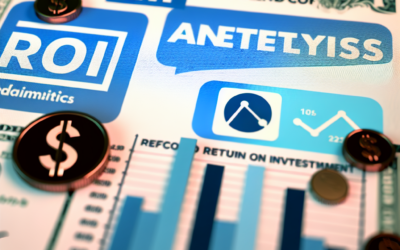Best Practices for Reporting Social Media Analytics to Stakeholders
In today’s digital age, social media analytics play a crucial role in shaping business strategies and driving growth. However, effectively communicating these insights to stakeholders can be challenging. This article explores the best practices for reporting social media analytics, ensuring that stakeholders understand and appreciate the value of your social media efforts.
Understanding Stakeholder Needs
Before diving into the data, it’s essential to understand what your stakeholders are looking for. Different stakeholders have varying interests and priorities, so tailoring your report to meet their needs is crucial.
- Identify Key Stakeholders: Determine who will be receiving the report. This could include executives, marketing teams, or external partners.
- Understand Their Goals: Are they interested in brand awareness, lead generation, or customer engagement? Knowing their objectives will help you focus on the most relevant metrics.
- Customize the Report: Use language and data visualizations that resonate with each stakeholder group.
Choosing the Right Metrics
Not all social media metrics are created equal. Selecting the right ones is vital for conveying the impact of your social media strategy.
- Engagement Metrics: Likes, shares, comments, and mentions can indicate how well your content resonates with your audience.
- Reach and Impressions: These metrics show how many people are exposed to your content, helping assess brand visibility.
- Conversion Metrics: Track actions like clicks, sign-ups, or purchases to measure the effectiveness of your campaigns.
For example, a case study by Sprout Social found that companies focusing on engagement metrics saw a 20% increase in customer satisfaction.
Utilizing Data Visualization
Data visualization is a powerful tool for making complex data more accessible and engaging. It helps stakeholders quickly grasp key insights without getting lost in numbers.
- Use Charts and Graphs: Visual elements like bar charts, line graphs, and pie charts can effectively convey trends and comparisons.
- Highlight Key Insights: Use color coding or annotations to draw attention to significant data points.
- Keep It Simple: Avoid cluttering visuals with too much information. Focus on the most critical data.
A study by the Nielsen Norman Group found that well-designed data visualizations can improve comprehension by up to 80%.
Providing Context and Insights
Numbers alone don’t tell the whole story. Providing context and insights is essential for helping stakeholders understand the implications of the data.
- Explain Trends: Discuss why certain metrics have increased or decreased and what factors may have influenced these changes.
- Relate to Business Goals: Connect the data to broader business objectives, demonstrating how social media efforts contribute to overall success.
- Offer Recommendations: Suggest actionable steps based on the data to improve future performance.
Conclusion: Driving Action with Data
Effectively reporting social media analytics to stakeholders requires a strategic approach that considers their needs, focuses on relevant metrics, utilizes data visualization, and provides context. By following these best practices, you can ensure that your reports are not only informative but also drive action and support business growth.
Incorporating these strategies into your reporting process will not only enhance stakeholder understanding but also demonstrate the value of your social media efforts. As you refine your approach, remember that clear communication and actionable insights are key to making a lasting impact.







